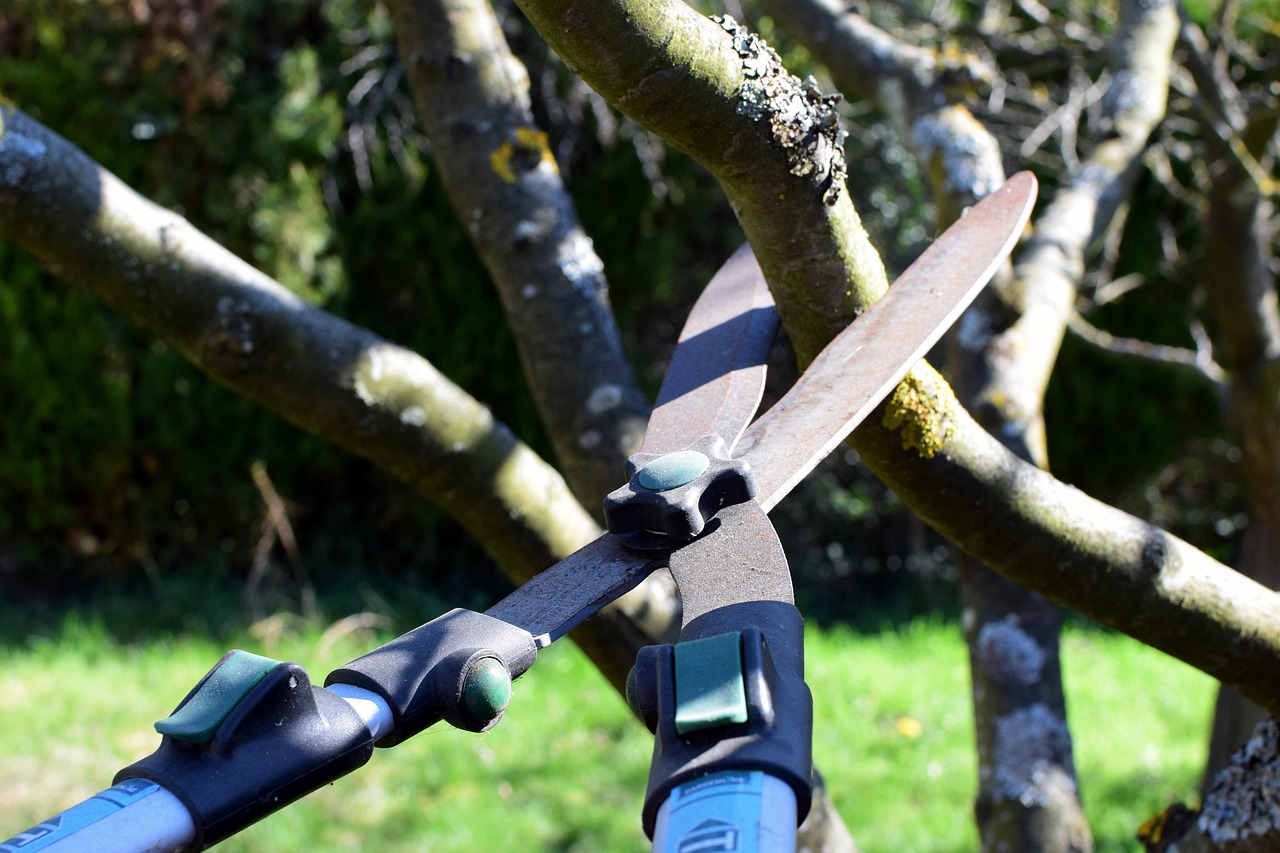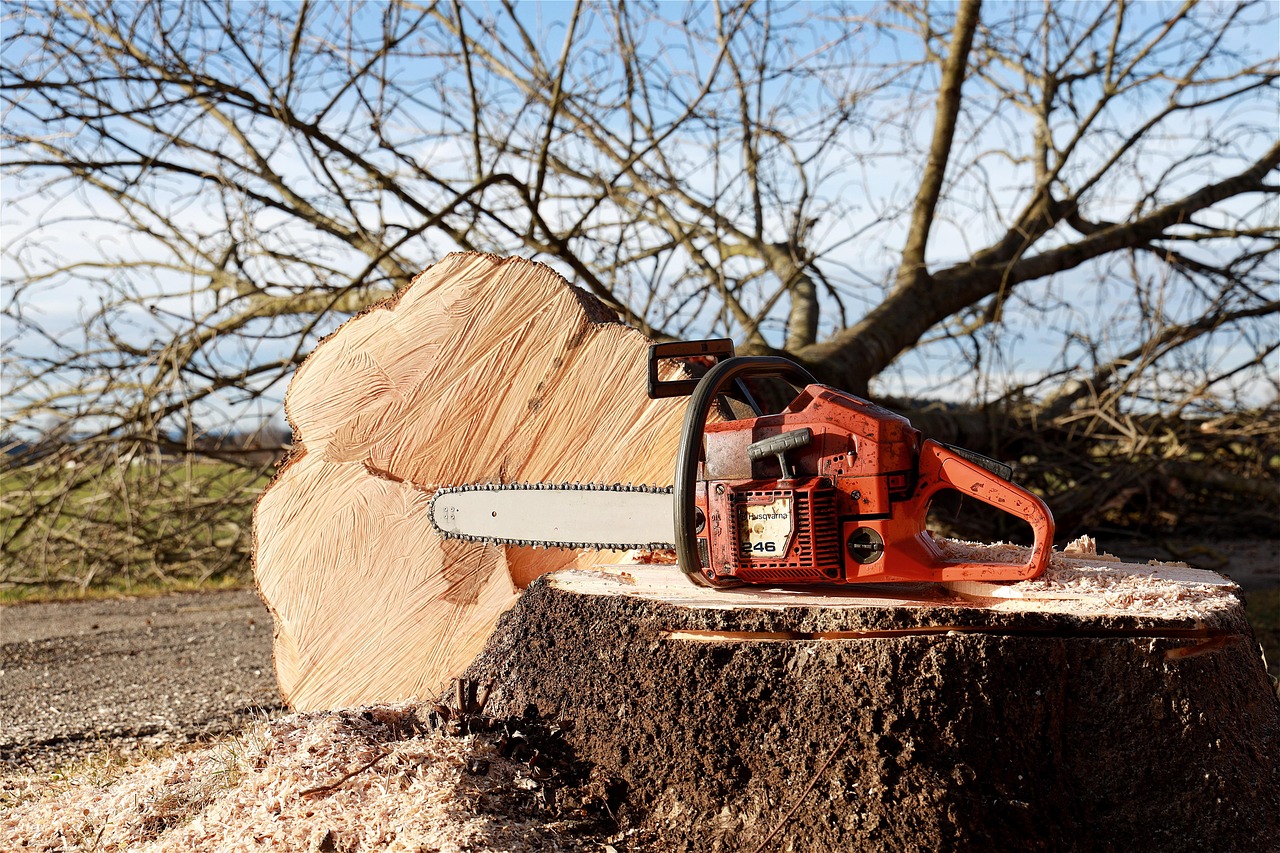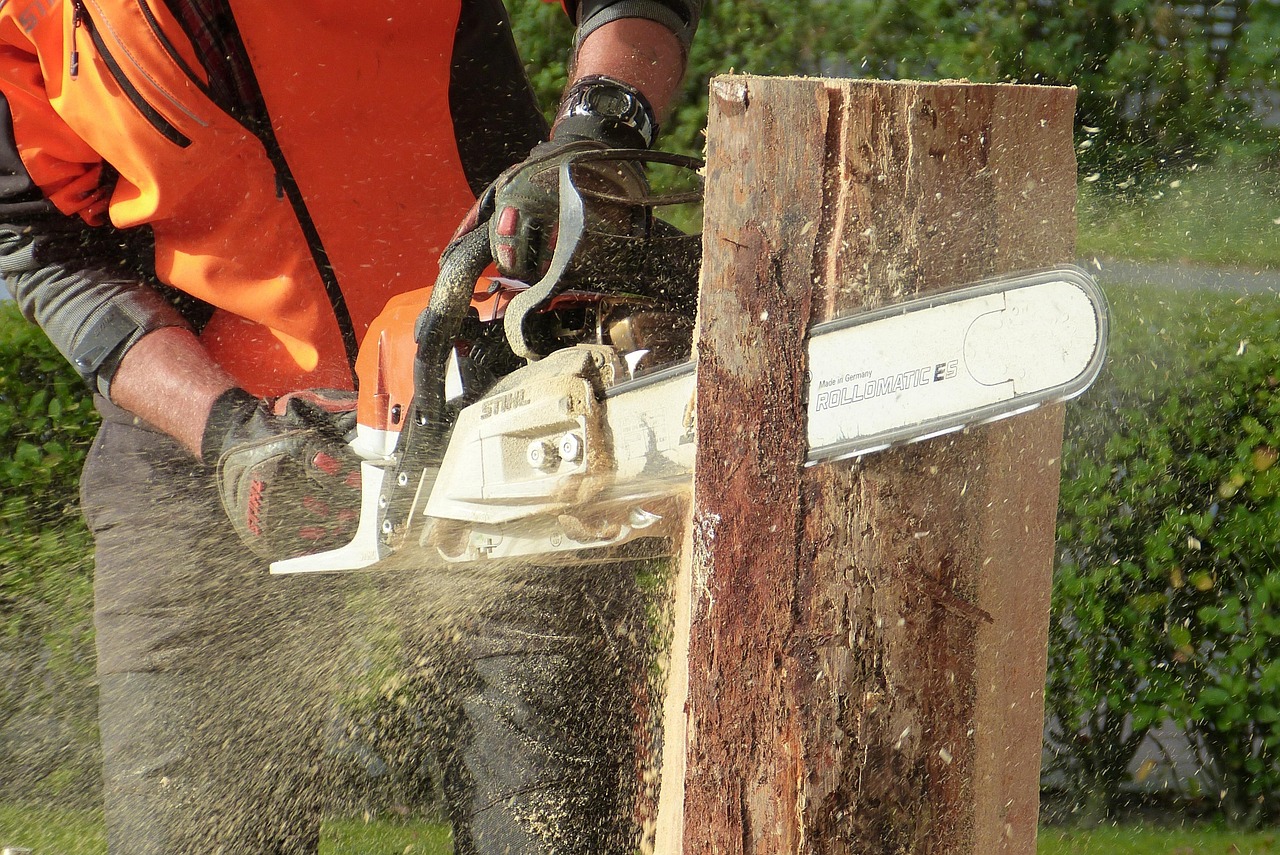Safe tree pruning practices are essential to promote tree health and ensure the safety of workers and bystanders. Key considerations include using the right tools, understanding tree biology, assessing tree structure, and implementing proper techniques.
Tree pruning is an important aspect of tree care. It enhances the health of trees by removing dead or diseased branches, encouraging growth, and improving aesthetics. However, improper pruning can lead to serious injury, damage to the tree, or harm to surrounding property. Therefore, understanding safe practices is crucial for anyone involved in tree maintenance.

Before starting any pruning work, it is essential to assess the tree’s condition and structure. This involves examining the tree for diseases, structural weaknesses, and overall health. Identifying potential hazards is key to ensuring a safe pruning process.
Understanding Tree Biology
Knowing how trees grow and respond to pruning is vital for effective tree care. Trees have specific growth patterns and biological responses that can be affected by pruning. Here are some key points to consider:
- Growth Patterns: Trees grow from their tips. Pruning should be done in a way that encourages healthy growth.
- Wound Response: Trees naturally seal wounds after pruning. Understanding this process helps determine when and how much to prune.
- Types of Cuts: Different cuts have different effects on tree health. Learning about heading cuts, thinning cuts, and removal cuts is essential.
By understanding these biological principles, pruners can make informed decisions that promote tree health while minimizing risks associated with pruning.

Tools for Safe Pruning
The right tools are critical for effective and safe tree pruning. Using inappropriate tools can lead to injury and poor results. Here is a list of essential pruning tools:
- Hand Pruners: Ideal for small branches up to ¾ inch in diameter.
- Loppers: Suitable for branches ¾ inch to 2 inches thick.
- Saws: Required for larger branches. Pruning saws or chainsaws may be necessary.
- Ropes and Harnesses: Important for safety when working at heights.
Maintaining tools is equally important. Sharp blades make cleaner cuts, which heal faster and reduce the risk of disease. Regularly check tools for damage or wear to ensure they function properly during pruning sessions.
Assessing Tree Structure
Before pruning, a thorough assessment of the tree’s structure is necessary. This evaluation helps identify which branches should be removed for optimal health and safety. Here are factors to consider:

- Branch Health: Look for dead, diseased, or damaged branches that need removal.
- Crown Structure: Assess the overall shape of the tree. Uneven crowns may require balancing cuts.
- Vulnerability: Identify branches that are weakly attached or crossing over one another.
A thorough assessment not only aids in making safe cuts but also enhances the aesthetic quality of the tree. By addressing structural issues, pruners can prevent future problems that may arise due to weak branch attachments or disease spread.
Pruning Techniques
Implementing the right techniques is crucial for safe and successful pruning. Here are some important techniques to master:
- The Three-Cut Method: This technique helps prevent bark tearing on larger branches. The first cut is made underneath the branch to avoid tearing when it falls. The second cut is made on top of the branch to remove it completely. The final cut removes the stub at the branch collar.
- Avoiding Topping: Topping is the practice of cutting branches back severely, which can lead to unhealthy regrowth and increased vulnerability to pests and diseases. Always prune back to a lateral branch instead.
- Timing Matters: Prune trees during their dormant season for most species. This reduces stress on the tree and promotes healthier growth in spring.
Using these techniques ensures that pruning contributes positively to the tree’s long-term health while minimizing risks associated with improper cuts.

In summary, safe tree pruning practices involve understanding tree biology, using proper tools, assessing tree structure, and implementing effective techniques. By paying attention to these key considerations, individuals can carry out pruning tasks safely and responsibly, promoting both tree health and personal safety.
Safety Precautions During Tree Pruning
Tree pruning can be a hazardous task. Ensuring safety for both the pruner and bystanders is paramount. Understanding potential risks and implementing safety measures can help prevent accidents. Below are some critical safety precautions to consider when pruning trees.
Personal Protective Equipment (PPE)
Using the appropriate personal protective equipment is essential for anyone involved in tree pruning. The following items should be included in any pruning safety kit:
- Hard Hat: Protects against falling branches and debris.
- Safety Goggles: Shields eyes from flying wood chips and dust.
- Gloves: Provides grip and protects hands from cuts and scrapes.
- Steel-Toed Boots: Offers foot protection from heavy falling objects.
- Hearing Protection: Necessary when using loud equipment like chainsaws.
Wearing these items significantly reduces the risk of injury during pruning activities.
Assessing the Work Environment
Before beginning to prune, it is crucial to assess the work area for potential hazards. Consider the following factors:
- Overhead Lines: Always check for power lines above the tree. Pruning near electrical lines can be extremely dangerous.
- Ground Stability: Ensure the ground is stable and free of obstacles. Slippery or uneven surfaces can lead to falls.
- Nearby Structures: Be aware of nearby buildings, vehicles, and other structures that may be affected by falling branches.
- Weather Conditions: Avoid pruning during high winds or storms, as these conditions can increase risk.
A thorough assessment helps identify potential dangers, enabling the pruner to take necessary precautions.
Working with Ladders and Climbing Gear
If tree pruning requires climbing, using ladders or climbing gear properly is essential for safety. Here are some guidelines to follow:
Ladder Safety
When using a ladder for pruning, consider the following safety tips:
- Sturdy Ladder: Ensure the ladder is in good condition and rated for the weight of the user and equipment.
- Ladder Placement: Place the ladder on stable, level ground. Use a ladder stabilizer if required.
- Three Points of Contact: Always maintain three points of contact when climbing the ladder for stability.
- Avoid Overreaching: Do not lean too far out while on the ladder; instead, descend and reposition it as needed.
Climbing Gear Safety
If using climbing gear, ensure that all equipment is up to standards. Here are crucial aspects to check:
- Harness Fit: Use a correctly fitted harness that allows freedom of movement without compromising safety.
- Rope Quality: Inspect all ropes for fraying or wear. Use climbing ropes specifically designed for tree work.
- Knot Knowledge: Know how to tie secure knots that can support your weight and withstand tension.
Proper use of ladders and climbing gear minimizes the risk of falls while working at heights.
Emergency Preparedness
No matter how well-prepared you are, accidents can still happen. Being prepared for emergencies is crucial in tree pruning. Here are steps to take:
- Create an Emergency Plan: Have a clear plan in place in case of accidents. This includes knowing who to contact and how to reach them quickly.
- First Aid Kit: Keep a well-stocked first aid kit accessible at all times during pruning activities.
- Training: Consider taking first aid and CPR training courses to handle emergencies effectively.
An emergency plan not only protects you but also ensures that help can be provided quickly if needed.
Post-Pruning Cleanup
A safe pruning session does not end once the last branch is cut. Proper cleanup is necessary to prevent accidents and maintain a tidy work area. Consider these cleanup tips:
- Remove Debris: Collect fallen branches and leaves to prevent tripping hazards.
- Inspect the Area: Ensure no tools or equipment are left behind that could pose a risk to others.
- Dispose of Waste Properly: Follow local regulations for disposing of organic waste from tree pruning.
A thorough cleanup not only enhances safety but also promotes an organized work environment, preparing you for future projects efficiently.
Common Tree Pruning Mistakes to Avoid
Even with preparation and knowledge, mistakes can happen during tree pruning. Understanding common pitfalls can help prevent damage to the tree and ensure safety. Below are some typical mistakes to avoid when pruning trees.
Improper Cutting Techniques
Using incorrect cutting techniques can harm the tree and lead to poor growth. Here are some techniques that should be avoided:
- Flush Cuts: Cutting branches flush with the trunk removes the branch collar, which is vital for the tree’s healing process. Always leave a small stub to encourage callus formation.
- Over-Pruning: Removing too many branches can stress the tree. Aim for a balanced approach, typically pruning no more than 25% of a tree’s canopy in one season.
- Ignoring Tree Type: Not every tree species responds the same way to pruning. Some trees require specific techniques at different times of the year.
By avoiding these mistakes, you can ensure healthier trees that recover quickly from pruning.
Neglecting Tree Health Assessment
Failing to assess the health of a tree before pruning can lead to unintended consequences. Here are key aspects to evaluate:
- Disease Presence: Inspect for signs of disease such as discoloration, spots, or unusual growths. Pruning diseased branches can spread infections.
- Pest Infestations: Check for pests, which can weaken branches and affect overall tree health. Treat infestations before pruning.
- Structural Integrity: Look for weak, broken, or crossing branches that may pose a risk during pruning.
A thorough assessment helps identify which branches should be removed and which should be preserved for optimal health.
Seasonal Considerations for Pruning
The timing of tree pruning can significantly affect the outcome. Different seasons have varying impacts on tree health and growth. Here are important seasonal considerations:
Spring Pruning
Spring is often a time of rapid growth for many trees. While some light pruning may be acceptable, heavy pruning should generally be avoided. Consider these points:
- Growth Energy: Trees spend energy on new growth during spring. Major cuts can stress the tree and hinder its ability to thrive.
- Flowering Trees: If pruning flowering trees, do so just after they bloom to avoid removing buds.
Summer Pruning
Summer pruning focuses on managing growth and shape. However, it should be done carefully:
- Light Pruning: Remove small branches or suckers to encourage healthy growth without stressing the tree.
- Monitoring Pests: Summer is an ideal time to assess and treat pest problems before they worsen.
Fall Pruning
Fall is generally not recommended for most tree species due to the onset of dormancy. However, there are exceptions:
- Dormant Trees: Some trees can be pruned in late fall when they are fully dormant, but this should be done cautiously.
- Avoid Wet Conditions: Pruning while trees are wet increases the risk of disease spread.
Winter Pruning
Winter is often considered the best time for pruning many deciduous trees. Here’s why:
- Dormancy Benefits: Trees are dormant in winter, making it less stressful to prune.
- Visibility: Without leaves, it is easier to see the structure of the tree and identify branches that need removal.
Certain evergreen species may also benefit from winter pruning but should be approached with care to avoid damaging them in extreme cold.
The Role of Professional Arborists
While many homeowners may attempt DIY tree pruning, there are situations where hiring a professional arborist is beneficial. Below are factors that indicate when to seek professional help:
- Larger Trees: If the tree is over 15 feet tall, it’s often safer to hire professionals with the right equipment and experience.
- Complex Structures: Trees with multiple trunks or complicated branching may require expert assessment and technique.
- Pest and Disease Management: Professionals can diagnose and treat tree diseases that amateur pruners may overlook.
- Safety Concerns: If you feel uncomfortable or unsure about climbing or using power tools, it’s best to rely on experienced arborists.
Professional arborists not only ensure safe practices but also promote the long-term health of trees through their expertise and knowledge.
Additional Resources for Tree Pruning
For those interested in expanding their knowledge about tree pruning and care, various resources are available. These can provide deeper insights into techniques, types of trees, and safety practices. Here are some valuable resources to consider:
- Books: There are many comprehensive books on arboriculture and tree care. Titles such as “The Tree Care Primer” and “Pruning Made Easy” can be very helpful.
- Online Courses: Websites like Coursera and Udemy offer courses on tree pruning and care. These courses can enhance your skills and knowledge.
- Local Cooperative Extensions: Many areas have agricultural extension offices that provide free resources, workshops, and expert advice on tree care.
- Professional Arborist Associations: Organizations such as the International Society of Arboriculture (ISA) provide a wealth of information and resources for tree care professionals and enthusiasts alike.
Engaging with these resources can help you stay informed about the latest techniques and best practices in tree pruning.
Understanding Local Regulations
Before beginning any tree pruning project, it’s important to understand local regulations regarding tree care. Many municipalities have specific rules about tree trimming and removal, particularly for protected species or trees located in public areas. Here are some points to keep in mind:
- Permits: Check if a permit is required for pruning specific trees, especially if they are on public property or are designated as protected species.
- Species Consideration: Some trees may be protected by law. Familiarize yourself with local regulations regarding tree species that require special attention.
- Neighborhood Guidelines: Homeowners’ associations (HOAs) often have their own rules regarding landscaping, including tree pruning. Be sure to comply with these regulations.
Being aware of these local laws can help avoid fines and promote responsible tree management in your community.
Caring for Pruned Trees
After pruning, trees require care to encourage healthy recovery and growth. Here are some post-pruning care tips:
- Watering: Ensure the tree receives adequate moisture after pruning. This is especially important during dry periods to help the tree recover from the stress of pruning.
- Mulching: Apply mulch around the base of the tree to retain moisture, regulate soil temperature, and suppress weeds.
- Monitoring: Keep an eye on the pruned tree for any signs of stress, disease, or pest infestations. Early detection can prevent more significant issues.
By providing proper care after pruning, you can support the tree’s health and encourage vigorous growth.
Final Thoughts
Tree pruning is a vital practice that promotes the health and longevity of trees while enhancing the beauty of landscapes. Understanding safe pruning practices is crucial for both personal safety and the well-being of the trees. Key considerations include using the right tools, employing proper techniques, assessing tree health, and being aware of your surroundings.
Remember to prioritize safety by wearing appropriate personal protective equipment and assessing the work environment before starting. Recognizing when to seek professional help is also essential, particularly for larger or complex trees requiring specialized knowledge and equipment.
As you continue on your tree care journey, utilize available resources to expand your knowledge and stay informed about best practices. Whether you are a seasoned gardener or a novice homeowner, understanding safe tree pruning practices will help you maintain healthy trees that contribute positively to your environment.
By adhering to these principles and guidelines, you can ensure that your tree pruning endeavors are safe, effective, and beneficial for both you and the trees you care for.
